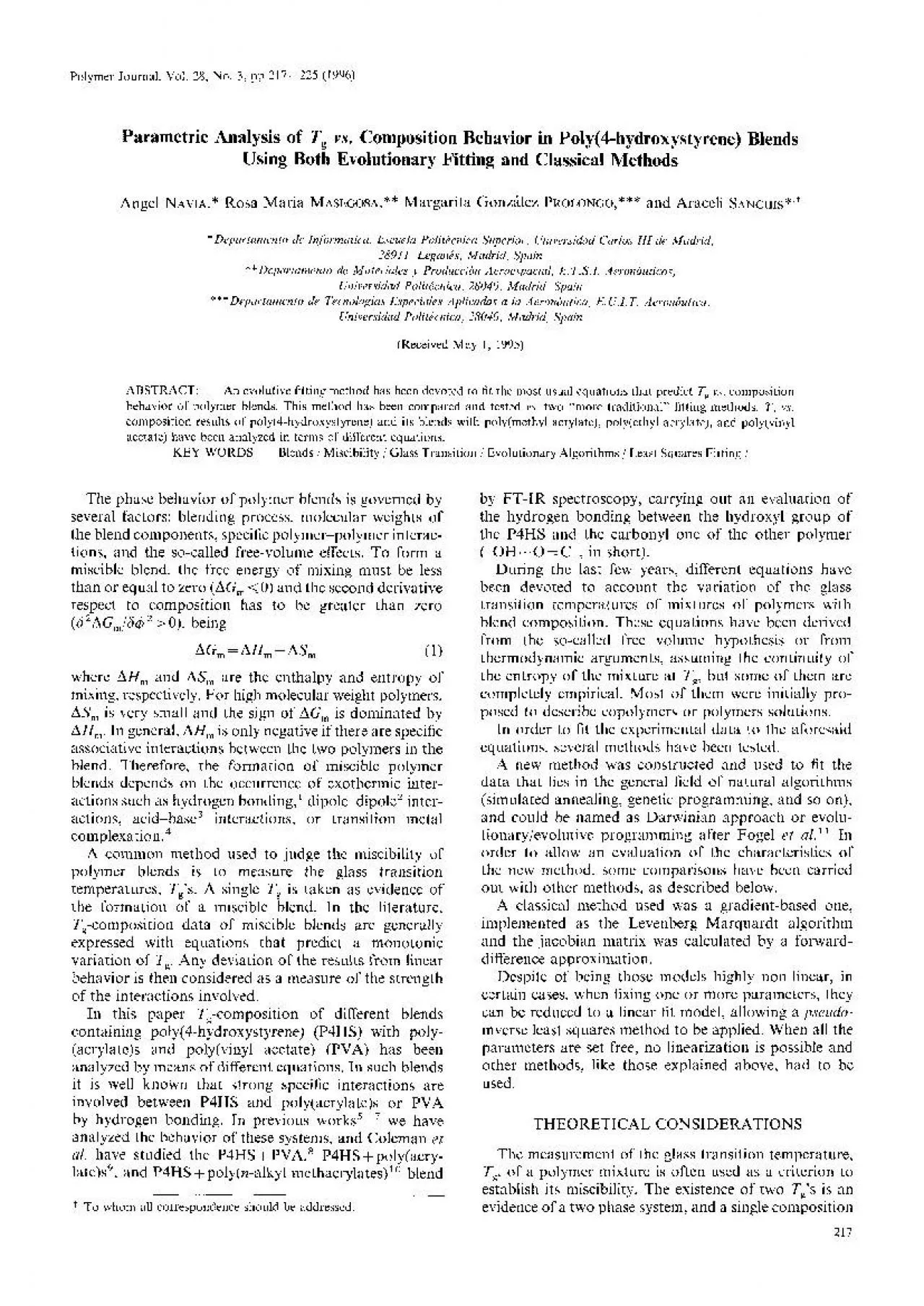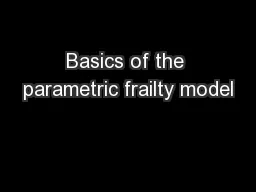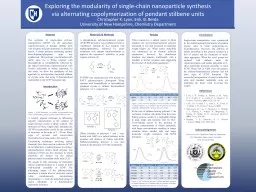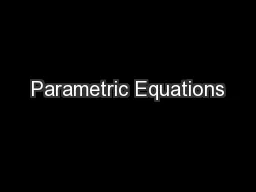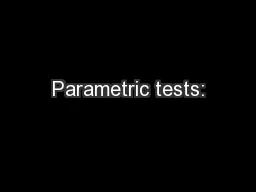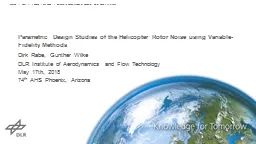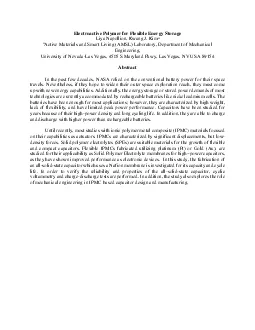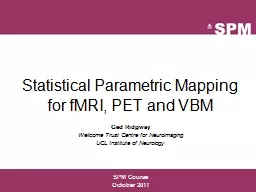PDF-Polymer Journal Vol 28 No3 pp 217225 1996 Parametric Analysis of Tg v
Author : nicole | Published Date : 2021-10-11
MASEGOSA Margarita Gonzalez PROLONGo and Araceli SANCHist Departamento de Informatica Escuela Politecnica Superior Universidad Carlos III de Madrid 28911 Leganes
Presentation Embed Code
Download Presentation
Download Presentation The PPT/PDF document "Polymer Journal Vol 28 No3 pp 217225 199..." is the property of its rightful owner. Permission is granted to download and print the materials on this website for personal, non-commercial use only, and to display it on your personal computer provided you do not modify the materials and that you retain all copyright notices contained in the materials. By downloading content from our website, you accept the terms of this agreement.
Polymer Journal Vol 28 No3 pp 217225 1996 Parametric Analysis of Tg v: Transcript
Download Rules Of Document
"Polymer Journal Vol 28 No3 pp 217225 1996 Parametric Analysis of Tg v"The content belongs to its owner. You may download and print it for personal use, without modification, and keep all copyright notices. By downloading, you agree to these terms.
Related Documents

